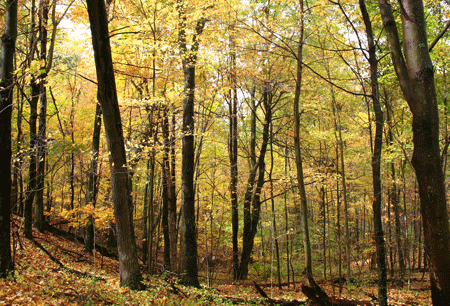 Determinants of spatial pattern in understory trees
Determinants of spatial pattern in understory trees
PIs: John Vandermeer (UM), Ivette Perfecto (UM), David Allen (UM)
Summary
The debate, concerning the relative importance of extrinsic versus intrinsic factors in population dynamics, is now playing out again in assessing the importance of intrinsic and extrinsic factors in explaining spatial patterns in the distribution of organisms. The forest dynamics project is aimed at entering this debate for the trees in an oak hickory woodlot. In a 18 hectare plot in the Big Woods near the north gate of the ESGR, we have established a plot where all trees greater that 10 cm in circumference have been geographically located, identified and measured. This forest is a transitional forest in that the overstory of oak and hickory is apparently the result of early Native American agriculture, and unable to replace itself because of low tolerance of oak and hickory seedlings to low light levels. Consequently the understory is now composed mainly of red maple and black cherry saplings which undoubtedly will take over the canopy eventually. The pattern formed by these two species, along with the understory species witch hazel, is dramatically non-random, clearly a function of the combination of dispersal limitation and competition, with the addition of seed predation and possibly pathogen activity. Through mathematical modeling and field surveys of this plot we seek to determine the intrinsic and extrinsic forces that determine the spatial patterning of these three species.
Relevant Links:
Vandermeer Lab Website
Perfecto Lab Website
Return to Research Projects list
